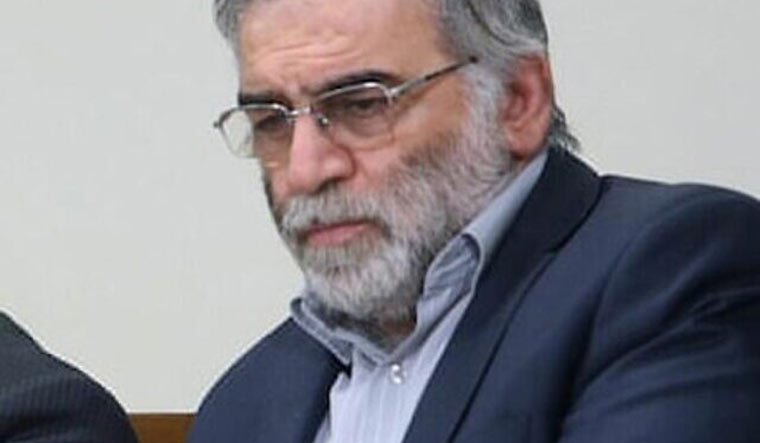
SOURCE: THE WEEK
On Saturday, Mohsen Fakhrizadeh, an Iranian scientist widely considered as the undisputed leader of the country’s nuclear program, was assassinated on the outskirts of Tehran. This resulted in fresh tensions between Iran and Israel. The Iranian foreign minister alleged that the killing bore “serious indications” of an Israeli role.
Israel, long suspected of killing several Iranian nuclear scientists a decade ago, declined to immediately comment. Israeli Prime Minister Benjamin Netanyahu once told the public to “remember that name” when talking about Fakhrizadeh. Iran always described him as a university physics professor. A member of the Revolutionary Guard, Fakhrizadeh had been seen in pictures in meetings attended by Iran’s Supreme Leader Ayatollah Ali Khamenei, a sign of his importance in Iran’s theocracy.
Details about the slaying remained slim in the hours after the attack, which happened in Absard, a village east of the capital. Iranian state television said an old truck with explosives hidden under a load of wood blew up near a sedan carrying Fakhrizadeh. As Fakhrizadeh’s sedan stopped, at least five gunmen emerged and raked the car with rapid fire, the semi-official Tasnim news agency said. Fakhrizadeh died at a hospital after doctors and paramedics couldn’t revive him.
The incident comes just as US president-elect Joe Biden stands poised to be inaugurated in January and will likely complicate his efforts to return America to a pact aimed at ensuring Iran does not have enough highly enriched uranium to make a nuclear weapon. That deal, which saw Iran limit its uranium enrichment in exchange for the lifting of economic sanctions, had entirely unraveled after US President Donald Trump withdrew from the accord in 2018.
Trump, while outwardly not confirming any US involvement, retweeted a post from Israeli journalist Yossi Melman, an expert on the Israeli Mossad intelligence service, about the killing. Melman’s tweet called the killing a “major psychological and professional blow for Iran”.
The killing risks further raising tensions across the Middle East, a year after Iran and the US stood on the brink of war when an American drone strike killed a top Iranian general in Baghdad. The attack came just days before the 10-year anniversary of the killing of Iranian nuclear scientist Majid Shahriari that Tehran also blamed on Israel. Other targeted killings were also reported at the time, along with the digital Stuxnet virus, believed to be a creation of the CIA and Mossad, that destroyed Iranian centrifuges.
History of assassinations
On November 29 2010, a nuclear scientist who worked with the Atomic Energy Organisation of Iran was assassinated after motorcyclists planted a bomb in the car he was travelling in. The departed Majid Shahriari was then dubbed as the “leader of Iran’s nuclear activities”. The assassination, which Tehran blamed on Israel and US warmongering, came after a string of similar incidents—most significantly the killing of nuclear scientist Masoud Alimohammadi in January 2010 by a bomb-strapped motorcycle near his car. However, there were also controversies regarding the assassinations as numerous publications reported that the two scientists were mere civilians with no role in the weapons programmes.
It was also the year that the Stuxnet virus attack was discovered. The digital worm was originally aimed at Iran’s nuclear facilities. According to McAfee, the malware attack targeted the programmable logic controllers (PLCs) used to automate machine processes and destroyed numerous centrifuges in Iran’s Natanz uranium enrichment facility by causing them to burn themselves out. It was the first known virus to be capable of crippling hardware and was reportedly created by the US NSA, the CIA, and Israeli intelligence.
Iran vows revenge
Iran’s president vowed Saturday to exact revenge over the killing of Fakhrizadeh. Hassan Rouhani reiterated that Fakhrizadeh’s death would not stop its nuclear program. Iran’s civilian nuclear program has continued its experiments and now enriches uranium up to 4.5 per cent, far below weapons-grade levels of 90 per cent.
He added: “The Iranian nation is smarter than falling into the trap of the Zionists. They are trying to create chaos.”
Hours after the attack, the Pentagon announced it had brought the USS Nimitz aircraft carrier back into the Middle East, an unusual move as the carrier already spent months in the region. It cited the drawdown of US forces in Afghanistan and Iraq as the reason for the decision, saying it was prudent to have additional defensive capabilities in the region to meet any contingency.






